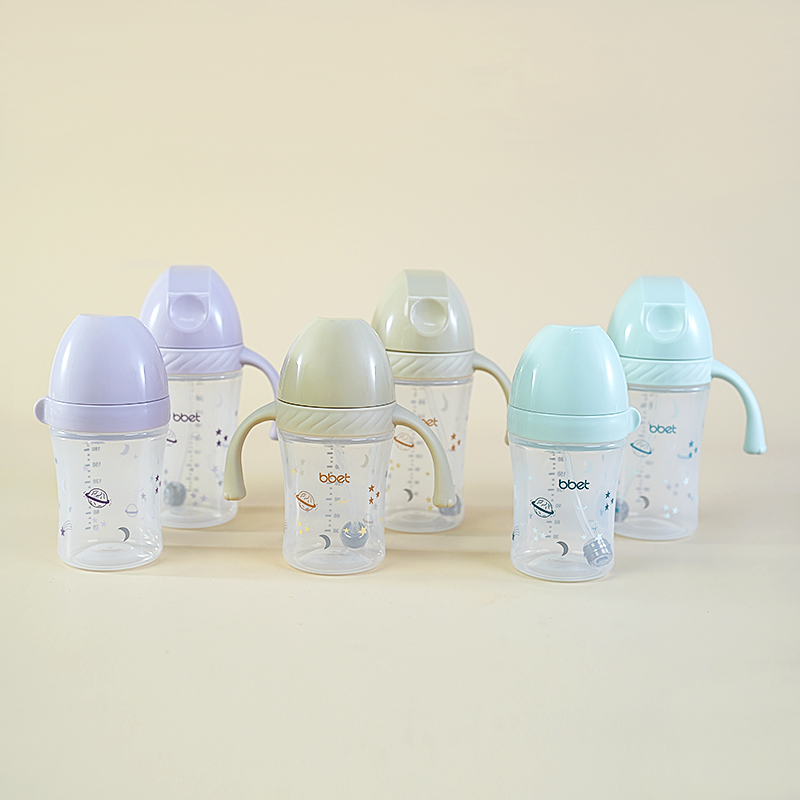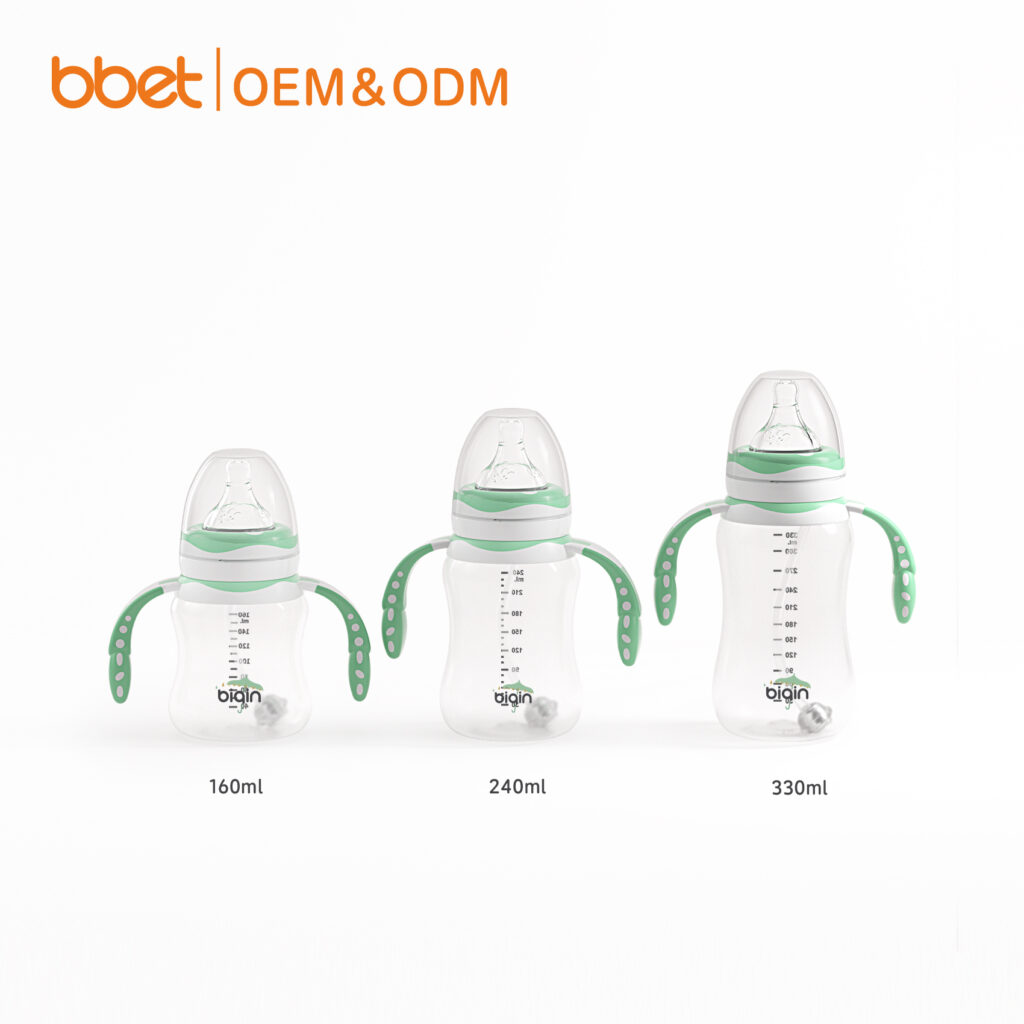
Item no.: WM-01163, WM-03246, WM-03247
- Bottle: pp
- Screw teeth: pp
- Cap: pp
- Nipple: silicone
- Handle: pp
- Available size: 180ml, 240ml, 300ml

Item no.: WM-01155, WM-01156, WM-01157
- Bottle: pp
- Screw teeth: pp
- Cap: pp
- Nipple: silicone
- Handle: pp
- Available size: 160ml, 240ml, 310ml

Item no.: WM-01119, WM-01120, WM-03177
- Bottle: pp
- Screw teeth: pp
- Cap: pp
- Nipple: silicone
- Handle: pp
- Available size: 240ml, 300ml

Item no.: WM-01140, WM-01139. WM-01136
- Bottle: pp
- Screw teeth: pp
- Cap: pp
- Nipple: silicone
- Handle: pp
- Available size: 150ml, 240ml, 300ml

Item no.: WM-01161, WM-03237, WM-03238
- Bottle: pp
- Screw teeth: pp
- Cap: pp
- Nipple: silicone
- Handle: pp
- Available size: 90ml, 210ml, 300ml

Item no.: WM-01083, WM-01084, WM-01085
- Bottle: pp
- Screw teeth: pp
- Cap: pp
- Nipple: silicone
- Handle: pp
- Available size: 160ml, 240ml, 330ml

Item no.: WM-01158, WM-01159
- Bottle: pp
- Screw teeth: pp
- Cap: pp
- Nipple: silicone
- Handle: pp
- Available size: 160ml, 240ml, 330ml

Item no.: WM-01128, WM-01114
- Bottle: pp
- Screw teeth: pp
- Cap: pp
- Nipple: silicone
- Handle: pp
- Available size: 160ml, 240ml

Item no.: WM-03191, WM-03192
- Bottle: pp
- Screw teeth: pp
- Cap: pp
- Nipple: silicone
- Handle: pp
- Available size: 220ml, 300ml
What are the special precautions for cleaning and maintenance of PP feeding bottles?
The cleaning and maintenance of PP (polypropylene) bottles require some special considerations to ensure their long-term safety and good condition. The following are specific cleaning and maintenance recommendations:
1. Avoid excessive high-temperature sterilization
Moderate sterilization: PP bottles can be sterilized with steam or boiling water, but frequent and long-term high-temperature sterilization is not recommended to prevent the material from aging or deforming.
Gentle sterilization method: It is recommended to use a milder method such as ultraviolet sterilizer or warm water sterilization, especially in daily cleaning, to extend the service life.
2. Use mild detergent
Special detergent: Use a special or mild, non-irritating detergent for baby bottles to avoid damage to the material by the chemical components in the detergent.
Cleaning steps: Use warm water and detergent to gently brush the inner and outer surfaces, paying attention to cleaning details such as the bottle mouth and threads.
3. Avoid using rough cleaning tools
Soft brush: Use a soft brush or sponge to clean the inner wall of the bottle to prevent scratches on the surface. Scratches can become a breeding ground for bacteria and affect hygiene.
Avoid steel wool: Rough tools such as steel wool can damage the surface of the bottle, causing it to age more easily and lose its smoothness.
4. Avoid strong acid and alkali cleaning
Avoid harsh chemicals: Do not use detergents containing strong acids or alkalis, which will accelerate material aging and performance degradation.
Natural cleaning: When deeper cleaning is needed, you can dilute a detergent with white vinegar and soak the bottle for a while, then rinse it thoroughly with warm water.
5. Rinse thoroughly after cleaning
Remove residue: After cleaning, you should rinse the bottle thoroughly with clean water several times to ensure that the detergent residue is completely removed.
Natural drying: Place the bottle upside down on a clean drain rack to dry naturally to avoid moisture accumulation and bacterial growth.
6. Regular inspection and replacement
Check for discoloration and scratches: Regularly check the bottle for signs of discoloration, scratches or deformation, and consider replacing it if these are found.
Replacement cycle: Depending on the frequency of use and cleaning method, it is generally recommended to replace PP bottles every 6-12 months, especially when they are worn or aged.
To keep PP bottles hygienic and safe, it is important to use gentle cleaning methods, avoid high temperatures and harsh chemicals, clean with a soft brush, and regularly inspect and replace the bottles. Paying attention to these details can extend the life of the PP bottle while ensuring it remains safe and hygienic during use.
Under what circumstances is it recommended to transition from PP bottles to other bottles?
The following are the situations where it is recommended to transition from PP feeding bottles to other materials:
1. Frequent high-temperature sterilization needs
Reasons for transition: If you find that you need to sterilize the bottles frequently, like using a steam sterilizer or boiling them repeatedly every day, PP bottles may not be durable enough. Repeated high-temperature treatment will accelerate aging, deformation or discoloration.
Recommended material: In this case, transitioning to PPSU bottles is an ideal choice because it can withstand high temperatures of up to 180℃ to 200℃ and can maintain stable performance and appearance during frequent sterilization.
2. Long-term use and durability requirements
Reasons for transition: If the baby grows up, uses the bottle more frequently, or wants to extend the life of the bottle, the PP bottle may no longer be durable enough.
Recommended material: Both silicone and PPSU materials provide better durability. Silicone bottles have an advantage in drop resistance, while PPSU performs best in high temperature resistance and long-term use.
3. Bottles show signs of aging
Reasons for transition: When PP bottles show obvious signs of aging, such as discoloration, deformation, rough surface or cracks, it means that its material has been worn out.
Recommended material: Consider upgrading to PPSU or silicone, both of which perform better in aging and long-term use.
4. Baby age
Reasons for transition: As babies grow older, the demand for durability and intensity of use of the bottle increases, and PP bottles may no longer be suitable for longer and more frequent use.
Recommended material: PPSU material can meet this demand, especially for children over 1 year of age and for increased frequency of use.
Situations where it is recommended to transition from PP bottles to PPSU or silicone bottles include: frequent high-temperature sterilization, higher requirements for durability, aging of PP bottles, or increased frequency of use as the baby ages. If any of the above conditions are met, it is wise to choose a more durable and stable bottle material.

